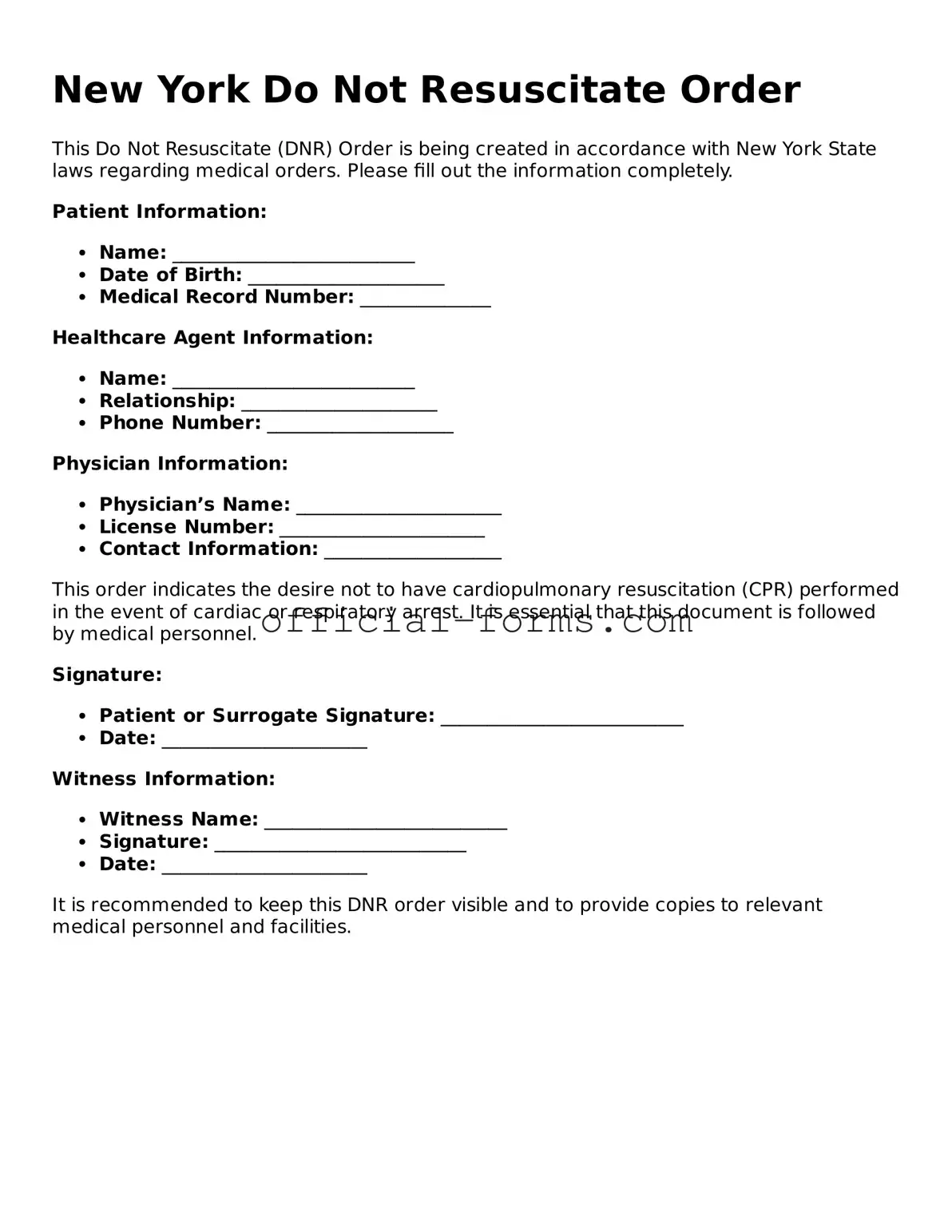Filling out the New York Do Not Resuscitate (DNR) Order form is a critical step for individuals wishing to express their medical preferences. However, mistakes can occur during this process, potentially leading to unwanted medical interventions. Understanding these common errors can help ensure that the form accurately reflects one’s wishes.
One common mistake is failing to include the patient's full legal name. This detail is crucial, as it ensures that the DNR order is correctly associated with the individual. Omitting this information can lead to confusion and may result in medical personnel not honoring the order.
Another frequent error involves not dating the form. A DNR order must be current to be valid. Without a date, medical staff may question the order's legitimacy, leading to unnecessary resuscitation efforts.
Many individuals also overlook the importance of signatures. The form requires the patient’s signature or, if the patient is unable to sign, the signature of a legally authorized representative. Neglecting to provide a signature can render the document ineffective.
Inaccurate information regarding the patient's medical condition is another mistake. The DNR form should clearly state the patient's condition to provide context for the decision. Vague or misleading descriptions can complicate the implementation of the order.
Some people mistakenly believe that a DNR order is only valid in a hospital setting. This misconception can lead to confusion among family members and healthcare providers. A properly executed DNR order is applicable in various settings, including at home and in nursing facilities.
Another error involves not discussing the DNR order with family members or healthcare providers. Open communication is essential. Failing to inform loved ones about the decision can lead to distress and conflict during critical moments.
Individuals may also neglect to review the DNR order periodically. As health conditions change, so too may preferences regarding resuscitation. Regularly reviewing and updating the form ensures that it remains aligned with current wishes.
In some cases, people may not understand the implications of a DNR order. It is vital to fully comprehend what it means to forgo resuscitation. Misunderstanding can lead to decisions that may not truly reflect one’s values or desires.
Finally, a common mistake is not keeping copies of the DNR order accessible. It is important to distribute copies to family members and healthcare providers. Having the order readily available ensures that it can be honored in an emergency.
By being aware of these common mistakes, individuals can take proactive steps to ensure that their DNR order accurately reflects their wishes and is respected by healthcare providers when the time comes.
